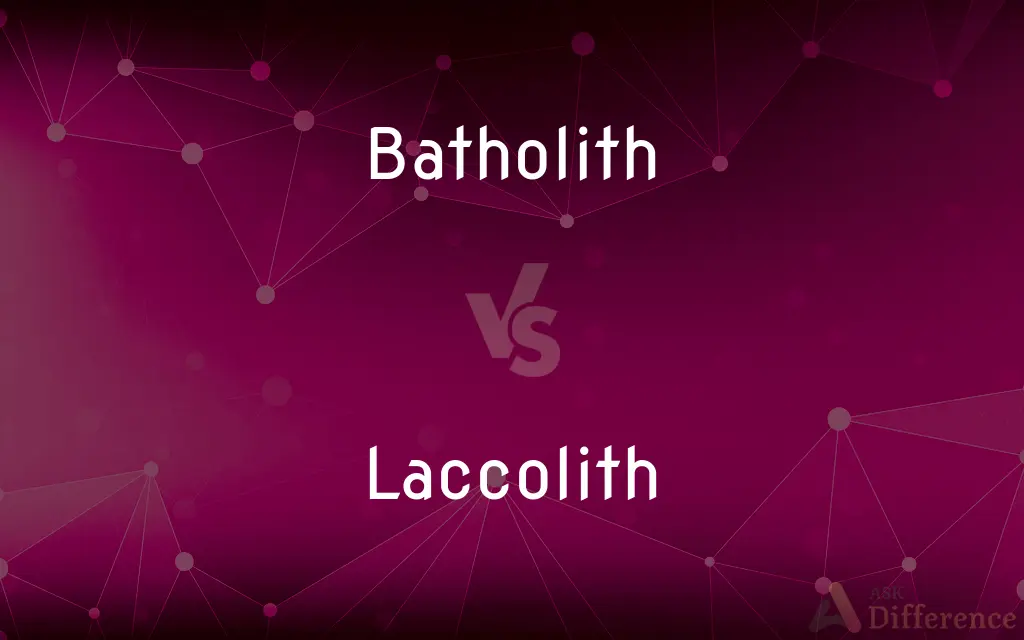Batholith vs. Laccolith — What's the Difference?

Difference Between Batholith and Laccolith
ADVERTISEMENT
Compare with Definitions
Batholith
A batholith (from Greek bathos, depth + lithos, rock) is a large mass of intrusive igneous rock (also called plutonic rock), larger than 100 square kilometres (40 sq mi) in area, that forms from cooled magma deep in the Earth's crust. Batholiths are almost always made mostly of felsic or intermediate rock types, such as granite, quartz monzonite, or diorite (see also granite dome).
Laccolith
A laccolith is a sheet-like intrusion (or concordant pluton) that has been injected within or between layers of sedimentary rock (when the host rock is volcanic, the laccolith is referred to as a cryptodome). The pressure of the magma is high enough that the overlying strata are forced upward and folded, giving the laccolith a dome or mushroom-like form (or possibly conical or wedge-shape) with a generally planar base.
Batholith
A large mass of igneous rock that has melted and intruded surrounding strata at great depths.
Laccolith
A mass of igneous rock intruded between layers of sedimentary rock, resulting in uplift.
Batholith
(geology) A large irregular mass of intrusive igneous rock that has melted or forced itself into surrounding strata
ADVERTISEMENT
Laccolith
(geology) A mass of igneous or volcanic rock found within strata which forces the overlaying strata upwards and forms domes.
Batholith
A large mass of intrusive igneous rock believed to have solidified deep within the earth.
Laccolith
A mass similar to lopolith but concave up.
Batholith
Large mass of intrusive igneous rock believed to have solidified deep within the earth
Share Your Discovery

Previous Comparison
Integrity vs. Accuracy
Next Comparison
Tortilla vs. Nachos













































